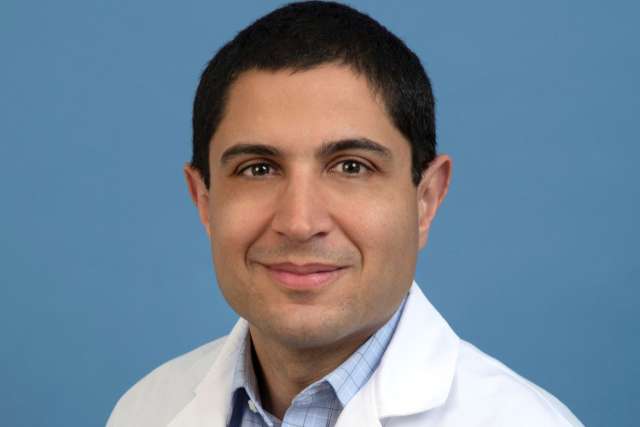UCLA Health’s Division of Pediatric Surgery is a national leader in the field, providing leading-edge care at UCLA Mattel Children’s hospital and at 10 additional hospitals across the Los Angeles region. UCLA Health pediatric surgeons see more than 3,000 patients annually, providing treatment for the full range of pediatric surgical indications, from hernias to the most complex pediatric conditions. UCLA Health has the highest case mix index — a measure of the complexity of the patient population — of pediatric surgery programs nationally.
The Division of Pediatric Surgery at UCLA Mattel Children’s Hospital earned the prestigious Level I Children’s Surgery Center designation from the American College of Surgeons Children’s Surgery Verification program. UCLA Health is the only recipient of this designation in Los Angeles and one of only five institutions with this designation in California.
UCLA Mattel Children's Hospital has a Pediatric Level 1 Trauma Center designation. UCLA Health’s pediatric surgeons also provide trauma care at Dignity Health Northridge Hospital Medical Center, the only Pediatric Trauma Center in the San Fernando Valley.
The pediatric surgery team provides surgical care for pediatric patients of all ages. They also see select adult patients who require the unique expertise of the pediatric surgical team.
Shant Shekherdimian, MD, interim chief of the Division of Pediatric Surgery and associate clinical professor in the Department of Surgery at the David Geffen School of Medicine at UCLA, discusses UCLA Health’s Pediatric Surgery program.
Q: How do minimally invasive approaches fit into surgical care for pediatric patients at UCLA?
Dr. Shekherdimian: At UCLA, all pediatric surgical cases that are amenable to, and appropriate for, minimally invasive approaches are done in that fashion. Common pediatric procedures, such as hernia repair and appendectomy, are typically performed laparoscopically.
UCLA is at the forefront of providing more advanced minimally invasive procedures to the smallest of patients, for conditions that are typically performed via standard "open" techniques. These advanced minimally invasive procedures for neonates include thoracoscopic repair of congenital diaphragmatic hernias or tracheoesophageal fistulas; laparoscopic repair of congenital anorectal malformation; and laparoscopic repair of duodenal atresia.
Minimally invasive approaches commonly employed for other complex pediatric procedures at UCLA include laparoscopic choledochal cyst excision; laparoscopic surgery for inflammatory bowel disease; and thoracoscopic removal of lung malformations.
Robotic-assisted approaches are utilized as appropriate depending on indication and child size.
Q: How does being part of a children’s hospital located within a major academic institution like UCLA influence care?
Dr. Shekherdimian: One of the advantages of being at a children’s hospital within an institution that also serves adults, compared to a standalone children’s hospital with only pediatric-trained specialists, is that we have access to, and can collaborate with, surgical colleagues who have substantial subspecialized expertise.
Collaborations with UCLA adult subspecialists have enhanced our pediatric bariatric surgery program and been important in the care of some of our older thoracic oncology patients and complex cardiothoracic surgery patients. These collaborations can also benefit adult patients. For example, we have had patients come to pediatric surgery after seeing an adult specialist for an indication in which our team has substantial experience and expertise, for example, pectus procedures.
We are also able to provide continuity of care for select patients from infancy to adulthood, for example, patients with congenital anorectal malformations who may require revision surgeries as adults. The surgical approach in infancy is unique and different from colon resections in older patients, so often the pediatric surgeon remains involved in care, either as the primary surgeon or consulting expert.
Q: What makes neonatal surgery at UCLA state of the art?
Dr. Shekherdimian: UCLA pediatric surgeons collaborate with UCLA experts in maternal-fetal medicine and neonatology to provide state-of-the-art neonatal surgical care. UCLA offers ex-utero intrapartum treatment (EXIT) and has the substantial experience and resources to take care of both the mother and baby. UCLA has a long-established ECMO program.
As a member of the University of California Fetal Consortium (UCFC), which brings together pediatric surgeons, neonatologists and perinatologists from different UC medical centers and provides a platform for data-sharing and protocol improvement, UCLA gains practice-changing insights that improve care for the youngest patients. For example, adoption of a UCFC-developed gastroschisis clinical pathway has permitted earlier introduction of feeding after gastroschisis closure and reduced days on ventilator, anesthesia encounters, and antibiotic and narcotic usage.
Q: Could you describe an area in which UCLA has led the way in innovating new ways to improve pediatric surgical care?
The UCLA Division of Pediatric Surgery was a pioneer in pectus procedures and serves as a major referral center for repair of pectus excavatum and pectus carinatum. Whereas, historically, pectus surgeries involved prolonged hospital stays, UCLA’s routine use of a minimally invasive approach and pioneering pain management approach have enabled many patients to spend less than a day in the hospital post-operatively.
Q: In addition to neonatal surgery and pectus procedures, what are some other areas in pediatric surgery where UCLA has particular expertise and capabilities?
Dr. Shekherdimian: There are many areas. One is pediatric bariatric surgery for adolescents dealing with severe obesity. These patients receive personalized, multidisciplinary care through UCLA’s comprehensive Fit for Health Clinic. Pediatric surgeons and adult subspecialists collaborate closely when surgical care is indicated. This partnership has been very important in making us a leader in this area.
Another area is pediatric inflammatory bowel disease care. Here, too, we collaborate closely with cross-disciplinary colleagues including adult subspecialists. They help us stay current on leading-edge practices and guidelines.
UCLA also has extensive expertise and dedicated teams in pediatric cardiothoracic surgery and craniofacial surgery.
Q: How does UCLA Pediatric Surgery approach quality improvement?
Dr. Shekherdimian: We have a robust, ongoing quality improvement program. For anything that we see with some regularity, we have created clinical pathways and bundles. This is important for ensuring all providers know what to expect in the management of pediatric surgery patients, minimizing variation and continually improving care.
We want to be sure our approach is evidence-based, while also allowing for the surgeon to make informed clinical judgments that are unique to cases. We know that by creating and implementing these tools we can decrease length of stay, minimize complications and improve the quality of the care.
One example of protocols developed through the quality improvement program is the approach to pectus excavatum repair that the UCLA team recently published in the Journal of Pediatric Surgery.
Q: Is UCLA Pediatric Surgery involved in any novel patient care initiatives?
Dr. Shekherdimian: Through the UCLA Pediatric Surgery and Anesthesia Home, all patients are reviewed by the surgery and anesthesia teams preoperatively and postoperatively to coordinate care, establish an optimal pain management plan and facilitate clear communication with patients and families about expectations for surgery and recovery. This initiative has improved efficiency of care delivery, empowered family caregivers and thereby reduced preoperative cancellations and truly benefited patients.
Another initiative is the UCLA Child Life program. Child Life Specialists are integrated with the pediatric surgical team and are involved in the care of all surgical patients from the moment they arrive at the hospital. The specialists offer age-appropriate information to children and parents, identify potential sources of stress, teach coping strategies and provide valuable insights to the child’s surgical team about developmental and psychosocial issues.
Q: Where does the UCLA Pediatric Surgery team provide services?
Dr. Shekherdimian: UCLA pediatric surgeons provide services at UCLA Mattel Children's Hospital, UCLA Santa Monica Medical Center and throughout the entire Los Angeles County hospital system, including at Harbor-UCLA Medical Center, Olive View-UCLA Medical Center and LA General Hospital. We also provide coverage at several additional hospitals in the San Fernando Valley, South Bay and Glendale/Burbank/Pasadena area.
The pediatric surgery team holds regular clinics at multiple sites and is generally able to see patients within two weeks of referral.




